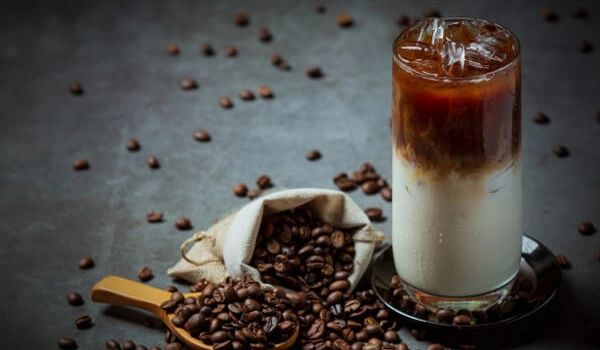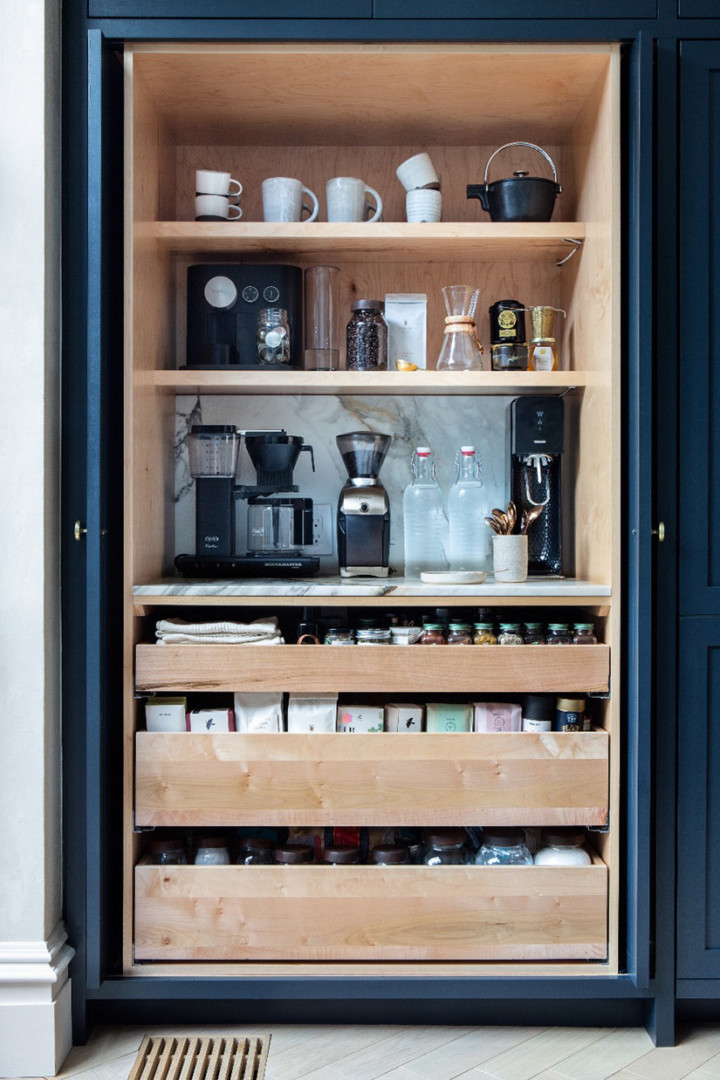Best Coffee Brewing Methods for Beginners (2025)
Among all coffee brewing methods in Vietnam, the Phin filter remains the most iconic and beloved. This traditional technique uses only a simple brewing tool – a small metal filter (phin) placed on top of a cup – yet produces a rich, bold flavor that captures the true essence of Vietnamese coffee from the very first drops.
Compared to modern brewing methods, making Phin coffee takes more time and patience, but the reward is a deep, aromatic cup that tells a story of culture and craftsmanship. For the best taste, always use purified water and ensure your phin and cup are clean and dry – ideally rinsed with boiling water before brewing. The optimal water temperature is between 95°C and 100°C for perfect extraction.
How to Make the Perfect Vietnamese Phin Coffee:
-
Preheat & Clean the Phin – Rinse the phin with hot water to keep it clean and warm, helping the coffee bloom evenly.
-
Add Coffee Grounds – Place 3 tablespoons (about 25g) of finely ground coffee into the phin, then gently shake to level.
-
Bloom the Coffee – Pour 30ml of hot water (92–98°C) slowly and evenly over the grounds, letting them absorb and expand for 2–3 minutes.
-
Brew – Insert the filter press (nắp gài) and pour another 50ml of hot water. Cover and wait as the coffee drips slowly into your cup. For maximum extraction, press the filter gently once dripping slows.
-
Serve & Enjoy – Once dripping stops, add sugar, condensed milk, or ice to your preference. Stir well and savor your authentic Vietnamese coffee experience.
☕ Pro Tip: Enjoy it hot for a bold, robust taste, or pour over ice for the famous Vietnamese iced coffee (Cà phê sữa đá) loved worldwide.
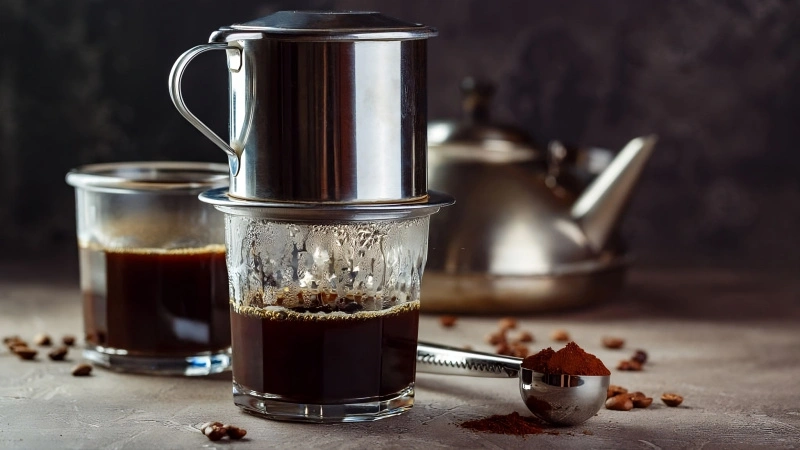
Vietnamese Phin Coffee – The Timeless Brewing Method
The term “Pour Over” literally means “pouring water over”. This brewing method involves slowly pouring hot water over freshly ground coffee, allowing the brewed coffee to drip through a filter into a carafe or cup. The process delivers a clean, aromatic, and well-balanced cup that coffee lovers around the world cherish.
A funnel-shaped dripper is typically used to hold the filter and coffee grounds during extraction. Popular pour over tools include the V60 dripper, Kalita Wave, and more – with the V60 being the most widely used for its precision and flavor clarity. For the best results, specialty coffee beans are often recommended, as they highlight the nuances and complexity of the brew.
How to Brew Perfect Pour Over Coffee:
-
Prepare the Filter – Place a paper filter in the dripper and rinse it with hot water to remove any paper taste and preheat the equipment. Discard the rinse water.
-
Add Coffee Grounds – Grind 15g of coffee (medium-fine) and place it into the filter. Tap gently to level the grounds.
-
Bloom the Coffee – Slowly pour 50g of hot water (around 92–96°C) in a spiral motion from the center outward, ensuring all grounds are saturated. Let bloom for 30 seconds to release gases and enhance flavor.
-
Continue Pouring – Gradually pour more water in slow, spiral motions until you reach 200ml. Keep your pour steady and even for optimal extraction.
-
Swirl & Serve – Gently swirl the brewed coffee in the carafe or cup to blend flavors, then enjoy a bright, aromatic, and clean cup of coffee.
☕ Pro Tip: Use freshly roasted beans and a gooseneck kettle for better control over your pouring speed and direction.
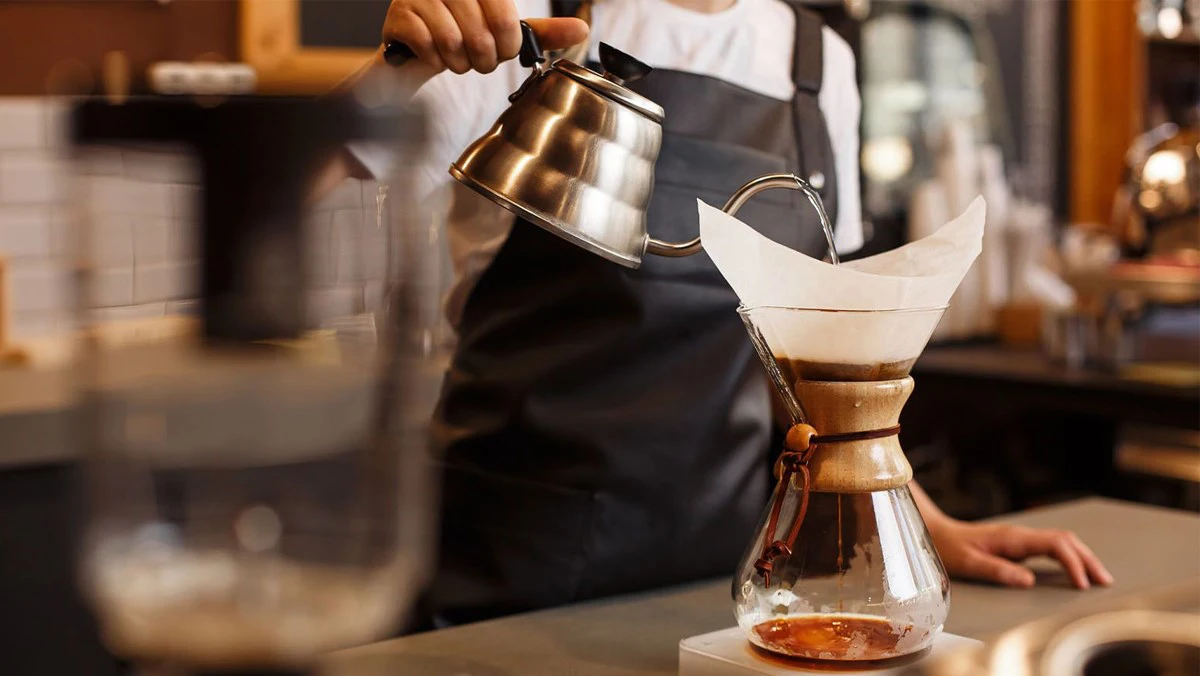
Pour Over Coffee – The Art of Hand-Brewed Perfection
Unlike most coffee brewing methods that use hot water, Cold Brew Coffee is prepared using cold water over an extended period. This technique traces its origins back to Dutch sailors, who, due to limited resources aboard their ships, steeped coffee grounds in cold water to extract flavor – accidentally discovering a smooth and unique brewing style that’s now loved worldwide.
Cold Brew requires patience: instead of quick hot extraction, coffee grounds are immersed in cold or room-temperature water for 4 to 24 hours, depending on the grind size and desired strength. The result is a naturally sweet, smooth, and less acidic coffee with mild bitterness, making it a perfect choice for both hot days and those who enjoy a gentler coffee experience.
How to Make Cold Brew Coffee:
-
Measure & Grind – Use coarsely ground coffee for best results (about 1:8 coffee-to-water ratio).
-
Combine with Cold Water – Place the grounds in a jar or cold brew maker and fill with filtered cold water. Stir to ensure all grounds are saturated.
-
Steep Slowly – Cover and refrigerate for 4–24 hours, depending on your preferred strength.
-
Filter & Serve – Strain through a fine mesh or coffee filter into a clean container.
Enjoy Your Way – Serve over ice, dilute with water or milk, or sweeten to taste.
☕ Pro Tip: Cold Brew concentrate can be stored in the refrigerator for up to 1 week, making it a convenient choice for busy mornings.
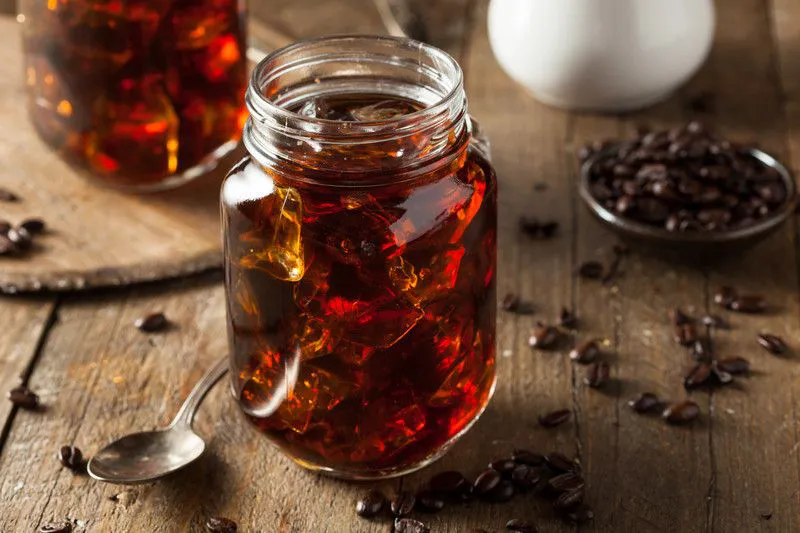
Cold Brew Coffee – Smooth, Refreshing, and Naturally Sweet
Originating from Italy, Espresso is one of the most popular coffee styles in the world. Its name comes from the Italian word “esprimere” (past tense: espresso), meaning “pressed out” – a perfect description of how it’s made.
To brew espresso, a specialized espresso machine forces hot water through finely ground coffee under 9–10 bars of pressure. In less than 30 seconds, this process produces a small but intensely flavored shot of coffee, far stronger and more concentrated than regular brews.
A well-crafted espresso shot features two distinct layers:
-
Crema – a golden-brown, velvety foam on top, created by the emulsification of oils during brewing.
-
Body – the rich, dark liquid beneath, bursting with aroma and depth.
Why Espresso is Loved Worldwide:
-
Rich Flavor – Deep, bold, and full-bodied taste.
-
Versatile Base – The foundation for cappuccino, latte, macchiato, and more.
Quick to Brew – Ready in under 30 seconds with the right equipment.
☕ Pro Tip: Use freshly ground coffee beans and a high-quality espresso machine for the perfect balance of crema and body.

Espresso Coffee – Italy’s Bold and Iconic Brew
Americano Coffee – Smooth, Mellow, and Perfectly Balanced
Americano may be known as “American coffee,” but its roots trace back to Italy. This coffee style was born during World War II, when American soldiers stationed in Italy would dilute strong Italian espresso with hot water. The result was a lighter, smoother cup of coffee that better matched their taste preferences – and a new classic was born.
Americano coffee is characterized by its gentle sweetness, mild intensity, and the absence of the sharp acidity often found in Arabica-heavy espresso shots. It offers the body and aroma of espresso but with a more approachable flavor and larger serving size.
How to Make an Americano:
-
Brew an Espresso – Start with a single or double shot of freshly brewed espresso.
-
Add Hot Water – Pour hot water over the espresso to your desired strength (typically 1:1 or 1:2 espresso-to-water ratio).
-
Enjoy – Serve hot and savor a smooth, mellow coffee perfect for sipping anytime.
Why Coffee Lovers Choose Americano:
-
Less Intense – A softer alternative to straight espresso.
-
Full Flavor – Retains the aroma and depth of espresso without overwhelming bitterness.
Simple Preparation – Just espresso and hot water, no special tools beyond an espresso machine.
☕ Pro Tip: For a richer taste, add the espresso on top of hot water instead of the other way around – this method is sometimes called a Long Black.
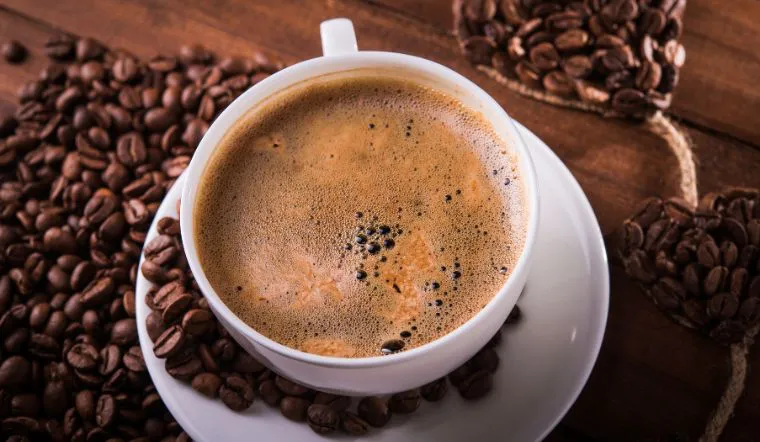
Moka Pot Coffee – Classic Italian Home Brewing
The Moka Pot is a traditional Italian stovetop coffee maker, designed to brew 2–3 small, strong cups of coffee with a rich aroma and flavor. Its simple yet effective design is divided into three parts:
-
Bottom Chamber – Holds water (the boiler).
-
Middle Filter Basket – Holds the ground coffee.
-
Top Chamber – Collects the brewed coffee.
Loved for its ability to create espresso-like coffee without an expensive machine, the Moka Pot is a staple in homes around the world.
How to Make Perfect Moka Pot Coffee:
-
Boil Water Separately – Heat water in a kettle to avoid overcooking the coffee grounds in the pot.
-
Grind Your Coffee – While water boils, grind fresh coffee to a medium-fine consistency.
-
Fill the Bottom Chamber – Pour the hot water into the Moka Pot’s bottom chamber up to the safety valve.
-
Add Coffee Grounds – Fill the filter basket with ground coffee and level it (do not press down).
-
Assemble the Moka Pot – Screw the top and bottom sections together securely.
-
Brew on the Stove – Place the Moka Pot over medium heat.
-
Watch the Extraction – Coffee will begin to bubble up into the top chamber.
-
Cool the Base – Wrap a cold, damp cloth around the bottom chamber once brewing finishes to stop extraction and prevent bitterness.
-
Serve & Enjoy – Pour into small cups and savor the rich, bold taste.
Why Moka Pot Coffee Stands Out:
-
Affordable and durable brewing method.
-
Produces strong, aromatic coffee without electricity (other than for heating).
Perfect for those who enjoy a bold Italian-style brew at home.
☕ Pro Tip: Use freshly ground, high-quality coffee beans and avoid overheating to preserve the coffee’s natural sweetness.
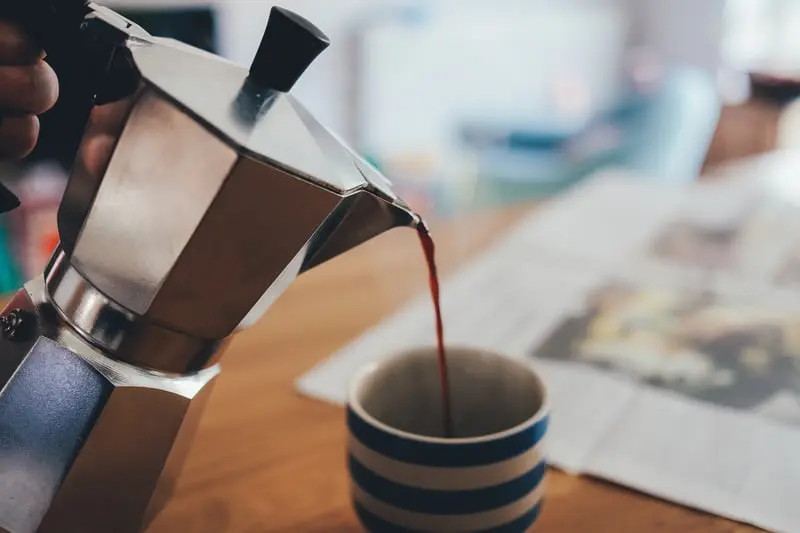
Latte – Elegant Coffee with a Touch of Art
While lovers of strong, traditional coffee may not always favor it, the Latte has won the hearts of those who appreciate beauty and refinement. Though its flavor is milder than more robust brewing methods, the Latte offers a classic, sophisticated coffee style that’s as pleasing to the eye as it is to the palate.
A Latte is made by combining espresso with steamed milk, topped with a delicate layer of milk foam. What makes it truly special is the art of pouring – skilled baristas craft beautiful patterns and designs in the foam, a practice known as Latte Art.
The Secret to a Perfect Latte:
-
Espresso Base – A freshly pulled espresso shot provides the rich foundation.
-
Steamed Milk – Smooth, velvety milk at the right temperature enhances sweetness.
-
Milk Foam – A thin layer of silky foam for texture and presentation.
-
Latte Art – Patterns like hearts, rosettas, or tulips elevate the coffee experience.
Why People Love Lattes:
-
Mild, creamy flavor perfect for casual coffee drinkers.
-
Artistic presentation that makes coffee a visual delight.
Versatile – can be flavored with vanilla, caramel, or seasonal spices.
☕ Pro Tip: For the perfect Latte, maintain the ideal milk-to-espresso ratio (typically 2:1) and pour milk slowly to blend the flavors while creating stunning latte art.

Cappuccino – Italy’s Creamy, Foamy Coffee Classic
The Cappuccino is one of Italy’s most iconic coffee drinks, loved worldwide for its creamy texture and velvety foam. Like a Latte, it’s made with espresso, steamed milk, and milk foam – but the key difference lies in the ratio.
In a Cappuccino, steamed milk and milk foam are used in equal amounts, giving it a lighter, fluffier appearance. In contrast, a Latte has only half as much foam as steamed milk, making the Cappuccino look more “airy” and indulgent.
Flavor Profile:
-
Smooth espresso base with a gentle coffee taste.
-
Rich creaminess from steamed milk.
-
Light, foamy texture that’s both comforting and elegant.
How to Make a Perfect Cappuccino:
-
Brew the Espresso – Use 8–10g of ground coffee in a portafilter, tamp firmly, and extract 30ml of espresso. (If you don’t have an espresso machine, you can use a Vietnamese phin filter for a similar base.)
-
Steam the Milk – Pour 120ml of cold fresh milk into a stainless steel pitcher. Submerge the steam wand about 1cm under the surface and froth for 10–15 seconds, stopping when the milk reaches 55–60°C.
-
Combine & Serve – Hold the espresso cup at a slight angle and pour the steamed milk into the center at a steady pace. Gently move the pitcher back and forth to create latte art.
-
Finish with a Dusting – Sprinkle cocoa powder or cinnamon on top for extra flavor and a professional touch.
Why Cappuccino is a Global Favorite:
-
Perfect balance of coffee and milk flavors.
-
Soft, airy foam makes each sip luxurious.
-
Versatile – enjoy it plain or flavored with chocolate, cinnamon, or caramel.
☕ Pro Tip: Serve Cappuccino in a 150–180ml cup to preserve the ideal milk-to-coffee ratio and foam thickness.
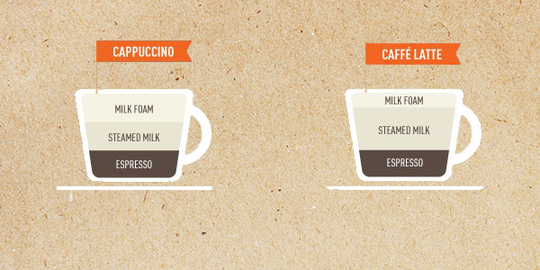
Bạc Xỉu – Vietnam’s Sweet, Milky Coffee Delight
Bạc Xỉu is a beloved Vietnamese drink, especially popular in Saigon (Ho Chi Minh City). While it’s often mistaken for Vietnamese iced milk coffee (cà phê sữa đá), Bạc Xỉu is actually the reverse: it’s a glass of milk with a hint of coffee, not the other way around.
In a traditional cà phê sữa đá, coffee is the main ingredient with a bit of milk to soften its bitterness. In Bạc Xỉu, sweetened condensed milk takes center stage, with just a small amount of coffee added to balance its rich, creamy sweetness.
Why People Love Bạc Xỉu:
-
Mild & Sweet – Perfect for those who don’t enjoy the strong bitterness of black coffee.
-
Creamy & Comforting – The thick sweetness of condensed milk pairs beautifully with a touch of coffee aroma.
-
Family-Friendly – A favorite among women and even children (served without caffeine for kids).
How to Make Bạc Xỉu:
-
Prepare the Milk Base – Add 2–3 tablespoons of sweetened condensed milk into a glass.
-
Add Coffee – Pour in a small shot of hot coffee (or espresso) to lightly flavor the milk.
Serve Hot or Cold – Stir well and serve hot, or add ice for a refreshing iced Bạc Xỉu.
☕ Pro Tip: Use Vietnamese phin-brewed coffee for an authentic flavor that pairs perfectly with condensed milk.
